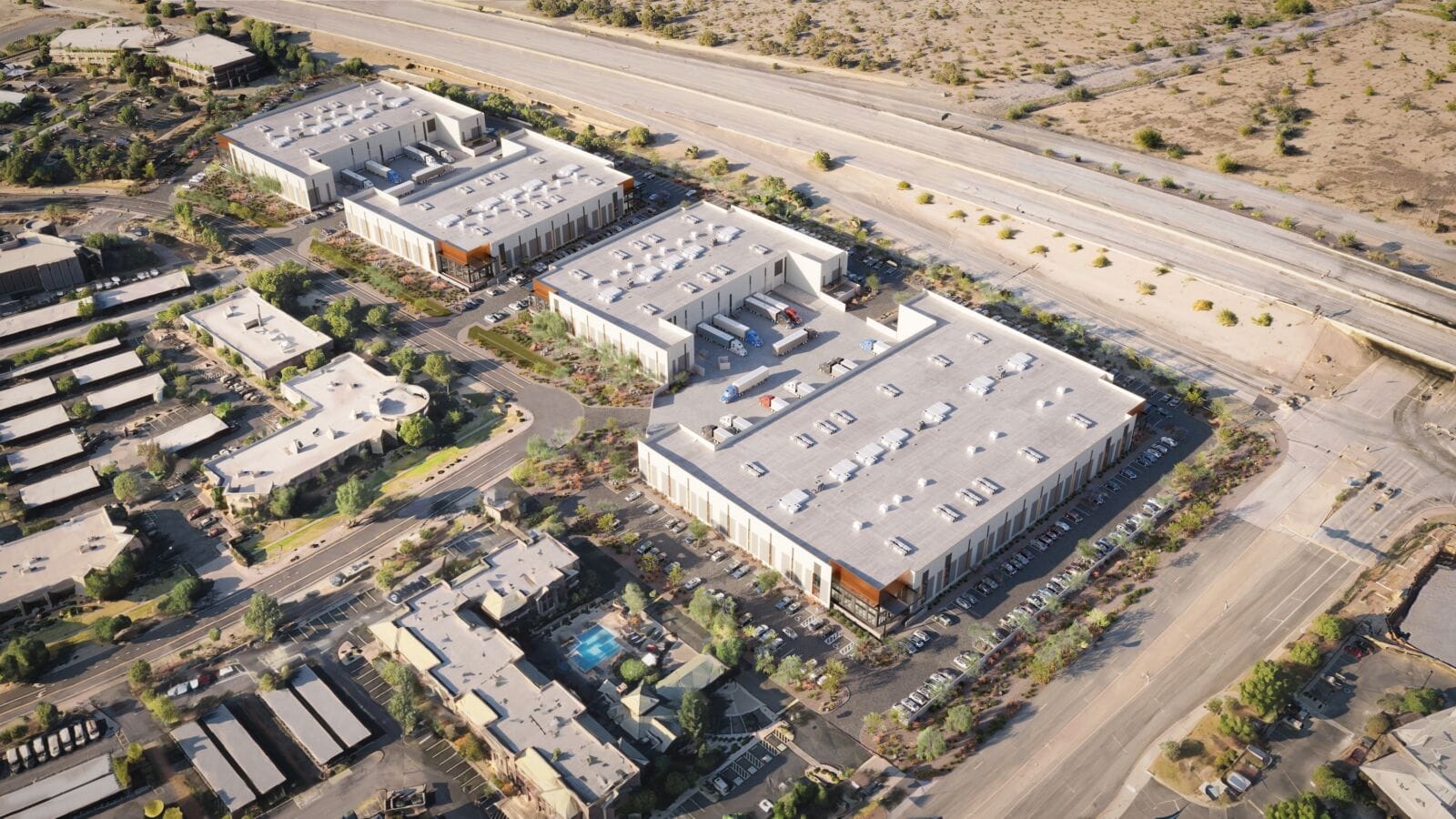While Phoenix remains a top industrial development hub with 17.4 million square feet underway, its pipeline is less than half the size it was a year ago, according to a new report from CommercialCafe.
DEEPER DIVE: Pinal County: How a rising region continues to climb
MORE NEWS: 10 best resorts in Arizona for 2025, according to Travel + Leisure
Western markets commanded the highest average sale prices in the nation with the region being home to six of the seven priciest markets by average price per square foot. Orange County leads the nation in that regard, with an average sale price of just over $300/square foot, which is up $18 from May but down 12% Y-o-Y. Orange County also boasts the largest average lease rates in the nation, standing at $16.80/square foot for in-place leases as of June, up 7.8% from last year.
Phoenix industrial development
At the same time, industrial pipelines are rebalancing as companies navigate complex trade situations. In June, Phoenix boasted the largest amount of industrial development underway regionally at 17.4M square feet, although that figure is less than half the amount that was under construction a year prior.
Other key highlights:
- The Inland Empire had the second largest amount of industrial space underway regionally at 8.3M square foot, representing an increase of 71%, compared to the 4.8M from June 2024.
- YTD industrial sales in Los Angeles total $1.16B for the fourth-largest sales volume nationwide and the largest in the Western U.S.
- Seattle had the widest lease spread at a regional level with a $2.67/square foot premium for leases signed in the last 12 months compared to in-place leases.
- Industrial vacancy rates among markets in the Western U.S. trended below the national average in June (9%): Orange County had the lowest vacancy rate regionally at 6.8%.
- Denver posted the highest Western vacancy at 11.4%.
- Central Valley remained most affordable at an average sale price of $89.7/square foot and a $6.64/square foot average in-place rent, with strong sales of $733M YTD.
Industrial Construction Pivoting to New Categories Amid Challenges
Phoenix industrial development and the rapid expansion experienced by the industrial sector between 2020 and 2024 was an all-time record in the industry’s history, delivering more than 2 billion square feet of new supply nationwide. The stage was already set for a robust cycle of expansion even before the onset of COVID, but ensuing supply chain issues and the e-commerce boom compounded the surge in development. Vacancy rates hovered around 4% in the first years of the decade, with some high-demand markets experiencing vacancies as low as 2%. Given these conditions, numerous speculative developments were started with the expectation of being pre-leased long before completion.
However, the large amount of new supply delivered since has pushed the national industrial vacancy rate up to 9% as of June — an unprecedented rate so far this decade. Furthermore, normalized demand is making it more difficult for recent developments to be absorbed, and tariff uncertainties are currently driving companies to look for supply chain optimizations rather than locking in leasing decisions.
Factors such as reshoring and nearshoring of manufacturing operations, expansion of data center capabilities, as well as continuing shifts to e-commerce and omnichannel retail continue to be the main driving forces behind industrial development. Nevertheless, unique challenges threaten to slow the pace of new supply. For example, logistics and retail are hindered by tariff uncertainty with the risk of increased costs continuing to influence leasing decisions, despite fears of a full-scale trade war being assuaged. Currently, manufacturing remains strong, but key industries that have driven much of the recent expansion — such as electric vehicles and green technology — may be affected by tax credit cuts. And, while firms may find it increasingly worthwhile to reshore manufacturing capabilities, state-of-the-art manufacturing facilities often take years to plan and build.
At the same time, data centers are undergoing a significant boom, but challenges from resource usage, availability and access remain. Moreover, beyond the difficulties in powering and maintaining data centers, much of the recent growth within the industry has been driven by large language models (LLMs). While LLMs enjoy increasingly wider adoption and become more sophisticated, setbacks such as concerns regarding return on investment, competition from Chinese companies and legal challenges may affect the sector’s enduring growth. The current administration plans to assist artificial intelligence companies through some of these challenges with a recently released “AI Action Plan,” which aims to turn the U.S. into a global powerhouse of AI and drive further growth in the industry.




